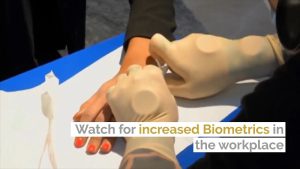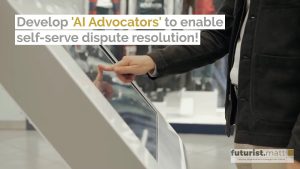2025 – Innovate or Die: A Futurist’s View on Industrial Relations
 Originally written for UNISON. Republished with kind permission here.
Originally written for UNISON. Republished with kind permission here.
It’s impossible to explore the future of industrial relations without first looking at how the world of work is evolving. Traditional models of full-time employment are being eroded by the growth of self-employment. Included in this is the rise of freelancing. Of the 4.8m self-employed people in the UK, 4.4m are ‘solo self-employed’ (employ no staff) and 2m are skilled freelancers. According to IPSE (Association of Independent Professionals and Self – Employed), the number of self-employed grew by 46% between 2008-16.
Another growing form of work is what has come to be called the ‘Gig Economy’. This is a type of on-demand, peer-to-peer economy for labour. Mediators of work such as Upwork and PeoplePerHour share similar characteristics, namely a ratings-based marketplace for talent alongside online/app-based forms of payment. 'Taskers' (those with services to offer) can earn money on a schedule they choose and tend not to have a full-time, specific position, instead taking on work piecemeal in a highly liquid labour marketplace. Many white-collar tasks can be delivered digitally and the rise in near free, quality communication channels plays a huge part in this trend.
Then there are companies like Uber and Deliveroo: still talent marketplaces, but with a limited type of service; in these cases, the platform becomes a mechanism for optimising price, supply and demand for a particular service.
According to a report from the Department for Business, Energy and Industrial Strategy (DBEIS), 2.8 million people found work via these platforms in the UK in 2017. That includes a wide range of jobs, from couriering, taxi driving and food delivery to digitally delivered tasks such as creative and administrative work.
Looking across the Atlantic, this use of contingent labour continues to rise. In 2016, 34% of US workers used ‘Gig Economy’ platforms to find work. By 2020, this is forecast to hit 43% and by 2025, over 50% of workers are projected to work this way.
There’s much both to criticise (short-termism, no benefits) and admire (flexibility, freedom) about this form of working, but let’s focus on the opportunities for trade unions:
Before advocating for members, unions need a meaningful membership for whom to advocate. Traditional union membership is currently on a declining path. Membership levels in the UK peaked in 1979 at around 13 million. Fast forward to 2017, and total union membership is under half that, at 6.3 million people. Of those, older people are in the majority, and they come especially from the private sector, whilst membership levels in the public sector are in decline across the board. “The long-term reasons for union decline are familiar: sweeping industrial change, anti-union legislation, shifts in social attitudes and the rise of outsourcing and offshoring.” (FT article.)
New members aren’t replacing older ones. The millennial demographic, especially, don’t seem to see the point – they have been brought up to aspire to individualism whilst collectivism (even with no political connotation at all) seems archaic. In part, this mirrors a larger issue of the legitimacy crisis in institutions worldwide, as evidenced by a deep stagnation in Edelman’s ‘Trust Barometer’ in 2018: there’s a pervasive sense that people feel they might be better off ‘going it alone’ in many contexts. According to an article in the FT, ‘“Unless something changes we should expect membership to fall to 17 per cent of those in work by 2030.” The union movement needs to face up to some hard truths; they are seen as overly bureaucratic, bloated and laden with lawyers. Many members don’t truly understand the value in membership, in part because of a move away from ‘check-off’ to direct debit payments. Those that do often see unions as nothing more than an insurance society.
The lesson for unions in the 21st century is simple – modernise, build trust and demonstrate your value.
That said, we are seeing a new breed of scrappy organisations fighting at the coalface of precarious employment. The Independent Workers union of Great Britain did well to secure rights to pensions, sick pay and holidays for cleaning staff at University College of London. They also secured an average 25% pay rise for couriers across five London workplaces. The sad thing here is they evolved out of frustration with the lumbering bureaucracies that are associated with the traditional trade union movement.
What now?
- Embrace Social Media as an organising principle!
 Another macrotrend in the ascendancy is Algorithmic Management, employed by many of the gig economy platforms to optimise efficiency. Take, for example, UberEATS, the subsidiary of taxi giant Uber, which launched in June 2016. They promise ‘the food you want, from the London restaurants you love, delivered at Uber speed.’ These delivery workers don’t have managers, known colleagues or even a hub from which to work. They are managed exclusively by their mobile apps – and now, ultimately by algorithms which monitor their work rate and efficiency.
Another macrotrend in the ascendancy is Algorithmic Management, employed by many of the gig economy platforms to optimise efficiency. Take, for example, UberEATS, the subsidiary of taxi giant Uber, which launched in June 2016. They promise ‘the food you want, from the London restaurants you love, delivered at Uber speed.’ These delivery workers don’t have managers, known colleagues or even a hub from which to work. They are managed exclusively by their mobile apps – and now, ultimately by algorithms which monitor their work rate and efficiency.
The early promise was a win-win for everyone. Digital enablement meant that drivers could work the hours that suited them. Restaurants would not be required to increase headcount to make deliveries. Things ran smoothly for a few months – until the app updated. The pay formula changed and many drivers found themselves out of pocket – and angry. Thus, August 2016 saw the first London strike by gig workers.
Why is this relevant to unions? Quite simply, they weren’t a part of proceedings. The demonstration was the result of immense creativity behind the mobilisation of a large group of people. Delivery riders used a combination of Facebook and Twitter posts to gain traction amongst colleagues. What really impressed me, though, was the way in which protestors ordered food deliveries – on the platforms against which they were objecting - in the location of the protest; and so were able to persuade fellow workers to join – even when they had no prior connection with those riders.
A subsequent protest in 2018 made national news and succeeded in securing a commitment from the company of ‘minimum payment guarantees of £9 to £11 an hour.’ What a great example of precarious workers with no tangible employment rights fighting back against a multi-billion dollar company with seemingly unlimited resources!
What can unions learn from this? How about educating members on how to use Social Media effectively? Online and workplace courses? Follow how others are using online tools to bring about change.
- Biometrics in the workplace
 The use of keycards for access to workplaces is nothing new. Through sensors and collecting data, facilities managers can tell where you are and how long you’ve been there. As a Londoner, I’m used to swiping my Oyster card when using public transport. As such, TfL knows a fair amount about my journey patterns, even if CCTV fails completely.
The use of keycards for access to workplaces is nothing new. Through sensors and collecting data, facilities managers can tell where you are and how long you’ve been there. As a Londoner, I’m used to swiping my Oyster card when using public transport. As such, TfL knows a fair amount about my journey patterns, even if CCTV fails completely.
You may have read a report in November this year about how 150 implants have already been placed into individuals and staff from finance and engineering companies. Reasons given for ‘microchipping’ staff revolve around improving security for companies; for example, restricting access to specific locations based on the nature of employees’ work.
“We know workers are already concerned that some employers are using tech to control and micromanage, whittling away their staff’s right to privacy. Microchipping would give bosses even more power and control over their workers. There are obvious risks involved, and employers must not brush them aside, or pressure staff into being chipped.” Frances O’Grady, TUC
It’s good to see unions taking this technology seriously. Biometrics represent a huge challenge for the new breed of digital ethicists. For example, where’s the line between incentivising employees and coercing them to take an implant? Failing to agree to an implant could mean not getting access to critical work-based services, for example.
Access and identity are also only a small part of the data which could be harvested by employers – who will then have myriad choices as to how that data is used. Products like the ‘MindWave Mobile 2’ headset seem innocuous enough: it senses brainwaves, and then recommends a meditation programme to the user. But products like this are part of a wider macrotrend towards Neural Interfaces which is set to grow massively over the next 10 years. We already see early-stage research into how analysing our brainwaves could be used to market products and services. Subject to GDPR and workplace laws, this same technology could also be used to send us work-related messages, or make judgements about the efficiency of individual employees.
Unions must pay close attention to the growth of biometric devices and their resulting data. With some foresight, you can work alongside employers to ensure the data is used ethically, with full consent and that it benefits members as well as employers. Perhaps your members would welcome their data being used to help them with weight loss, smoking cessation, or health assessments? It would equally be your responsibility to ensure that the same data is not used by insurance companies to penalise employees or potentially sees them being fired for generating data that contravenes a condition of employment!
- The Rise of ‘Digital Wellness’
 Transparency Market Research forecasts the Digital Healthcare market to triple in size between 2017 and 2025. In part, that rise correlates with the growth of Smartwatches, Fitness Trackers, Smart eyewear/clothing and Smart medical devices. You thought the Pokemon Go phenomenon of 2016 was something? You ain’t seen nothing yet! Even jogging will be gamified as runners escape the zombie apocalypse using their smartglasses/lenses which are tethered to a smartphone app.
Transparency Market Research forecasts the Digital Healthcare market to triple in size between 2017 and 2025. In part, that rise correlates with the growth of Smartwatches, Fitness Trackers, Smart eyewear/clothing and Smart medical devices. You thought the Pokemon Go phenomenon of 2016 was something? You ain’t seen nothing yet! Even jogging will be gamified as runners escape the zombie apocalypse using their smartglasses/lenses which are tethered to a smartphone app.
A US study carried out in 2014 by Towers Watson concluded that 1 in 5 US employers used rewards and penalties to encourage employees to achieve desirable health goals such as weight loss, lower cholesterol and blood pressure. As digital health devices become more ubiquitous, so does employers’ capacity to measure employees’ adherence to health goals.
BP engaged FitBit’s Group Health division to implement a ‘one million step challenge’ for its employees. Those who achieved their targets found themselves eligible for discounted health insurance. In itself, that’s not a bad thing – but again, those who don’t participate won’t get the same benefits. Unions need to engage with employers now, so that schemes like this don’t penalise members for non-participation.
Digital Wellness and health should be a win-win for employers and staff. Healthy employees means reduced absenteeism and increased presenteeism. Both are critical to well-functioning organisations. My fear is that these technologies can be harnessed by employers as a box ticking exercise that reduces their liability in employee tribunals and other legal cases. Unscrupulous employers can present collected data and manifest conjecture against employees to suit their case. Wily union reps should be aware of this and consult your newly appointed data science specialists before entering negotiations on behalf of your members.
- Develop your own ‘AI Advocators’ for speed across the ground.
 AI, algorithms and other forms of IT continue to augment us in the workplace in increasingly sophisticated ways. Work involving systematic logic and reasoning is entirely at risk from the machines as they get smarter. The law is no exception, especially given the UK’s deregulation of the legal market in 2011 and the growth of data and computing power fuelling AI since 2012.
AI, algorithms and other forms of IT continue to augment us in the workplace in increasingly sophisticated ways. Work involving systematic logic and reasoning is entirely at risk from the machines as they get smarter. The law is no exception, especially given the UK’s deregulation of the legal market in 2011 and the growth of data and computing power fuelling AI since 2012.
The legal profession is finding itself disrupted through a wide range of new technologies. ROSS Intelligence software searches precedents and answers questions by scouring case law, readings and other secondary resources. Casetext’s CARA even helps lawyers forecast opposing counsel’s arguments by sourcing previously used opinions.
Easy-to-use legal tech doesn’t come cheap. Unions should use their collective buying power to create self-service advocacy solutions which grant access to services for members they wouldn’t otherwise be able to afford. The lifeblood of any AI solution is its access to data – which you’ll already be campaigning to secure on behalf of members.
Now is the time to research and investigate these technologies and how your members can benefit from them. Employers certainly are and you need to be ahead of the game to thrive.
Final thoughts
Technological advancements are occurring at a faster rate than ever. Indeed, the concept in futurism of ‘Exponential change’ is a specialist field in itself. This matters because social science can often be considered the study of unintended consequences: every technological achievement brings with it a host of additional, and often completely unexpected consequences… Take the impact of mobile phones in public places: the issue is not just the potential health effects, but changes in behaviour (not looking where we're going), culture (when it's socially acceptable to look at one's phone) and business (we're always on, 24/7 and expect the same from everyone else). We don’t always realise how technology will impact society until it does. Unions would do well to have someone on the staff whose job it is to forecast likely changes that will affect the membership. Perhaps they already do?
The other thing I can’t stress enough is that Governments are simply never pro- or re-active enough to respond to the pace of change, and unions have a role in filling this gap. Collective bargaining is weakening – an inevitable consequence of flexible working relationships and zero hours contracts. Automation of work is set to have dramatic impact. Unions should examine these trends further and perhaps even include training for members on topics around continuous learning, reskilling and even how best to work alongside machines to avoid being replaced by them.
I’d like to leave you on a positive point. Jobs are only going to go away when problems go away. In other words, as long as society has problems, new jobs, organisations and business will emerge to solve them. Unions should recognise this and explore where new job families are likely to evolve and how they can work to benefit members in these new categories.
